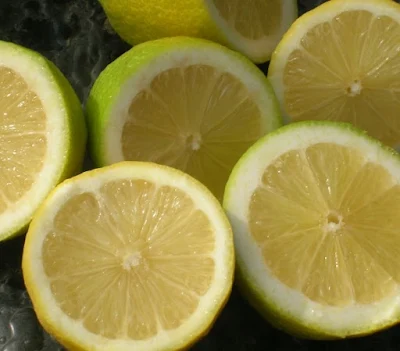The ketogenic diet is a high-fat,
adequate-protein and low-carbohydrate diet that is used in medicine
primarily to treat difficult-to-control (refractory) epilepsy in
children. The diet forces the body to burn fats rather than
carbohydrates. Normally, the carbohydrates contained in food are
converted into glucose and then transported around the body. Glucose is
particularly important in fuelling brain function.
However, if little carbohydrate remains
in the diet, the liver converts fat into fatty acids and ketone bodies.
The ketone bodies pass into the brain and replace glucose as a source of
energy.
An elevated level of ketone bodies in
the blood, a state known as ketosis, leads to a reduction in the
frequency of epileptic seizures, but many people have adopted the
extreme diet for a quick weight loss.
Ketones replace carbohydrates as the
body’s main source of energy, which means that they run almost entirely
on stored fat. They are also produced when the total calorie intake is
low. When you run short of stored energy, your body will burn stored fat
instead and the result will be weight loss. This process is referred to
as being in the ‘state of ketosis’. This state is also achieved during
fasting.
The classical ketogenic diet has a ratio
of four grammes of fat to one gramme of combined carbohydrates and
protein. So, basically, it is 85-90 per cent fat, which isn’t a
palatable or exciting diet, as you can imagine, due to the massive
restriction in the types and quantities of foods that contain
carbohydrates, including loaves of bread and cereals, fruits, some
vegetables and dairy products. The individual needs to be under the
supervision of a doctor and dietitian and be monitored for side effects,
particularly if he is on medication.”
Components of the keto diet
The keto diet limits carbohydrates to
just 20-50g a day. A single slice of bread typically has 15g of
carbohydrates. So you can imagine how restrictive this form of eating
can be. An example of components of Keto diets are:
- Proteins: beef, lamb, poultry, pork, fish and seafood, eggs and tofu (if you are vegetarian).
- Above-ground vegetables: spinach, rocket, kale, broccoli, mushrooms, celery and cabbage.
- Fats: coconut oil, olive oil, flaxseed oil, oil-based salad dressings and macadamia oil.
- High-fat dairy: cheese, high-fat cream and butter.
- Nuts and seeds: macadamias, walnuts, sunflower seeds, almonds, flax seeds and nut butter.
- Certain fruits: avocados, raspberries, blackberries, strawberries, lemons and limes.
- Sweeteners: low-carb sweeteners.
- Drinks: almond milk, coffee, tea, water and sparkling mineral water.
- Herbs and spices: salt, pepper, coriander, rosemary, basil and garlic powder.
Side effects of keto diet
The most common side effect of the diet
is constipation due to the cutting out vital sources of fibre in the
diet. Lack of fibre can also increase the risk of bowel cancer and heart
disease in the long term. This can be prevented by drinking lots of
water, eating plenty of the high-fibre ‘allowed’ vegetables and taking a
fibre supplement.
Other possible side effects of long-term
adherence to the diet include: raised cholesterol levels, renal stones,
poor growth (in children) and reductions in bone density, altered
immune function, altered liver function, nutrient deficiencies.
Benefits of keto diets
While little research has been done
specifically around the diet’s long-term effects, some studies suggest
there are health benefits in following such a strict low-carbohydrate
diet, such as its ability to improve Type 2 Diabetes and shrink some
forms of brain cancer.
This diet is used in medical nutrition
therapy as a short-term test diet for specific medical conditions, such
as epilepsy and should only be used medically under the supervision of
experts.
While the ketogenic diet may be an
appropriate short-term solution under strict supervision for some and
will result in weight loss, it could lead to serious health
complications over time. If you are looking for a sustainable
weight-loss solution, visiting your doctor should be your first port of
call. He will measure your blood pressure, blood lipids and blood
glucose, and potentially look at kidney function and liver function.
The doctor will also refer you to a
dietitian.” The doctor and dietitian will then assess the current state
of health, weigh up the positives and negatives of different weight-loss
regimes and recommend the appropriate one.
Contraindications to keto diet
There are controversies and myths about a
keto diet, but for most people, it appears to be safe. There are,
however, groups of people that often require special consideration. They
include those that take medication for diabetes, e.g. insulin, those
that take medication for high blood pressure and those that are
breastfeeding.


























